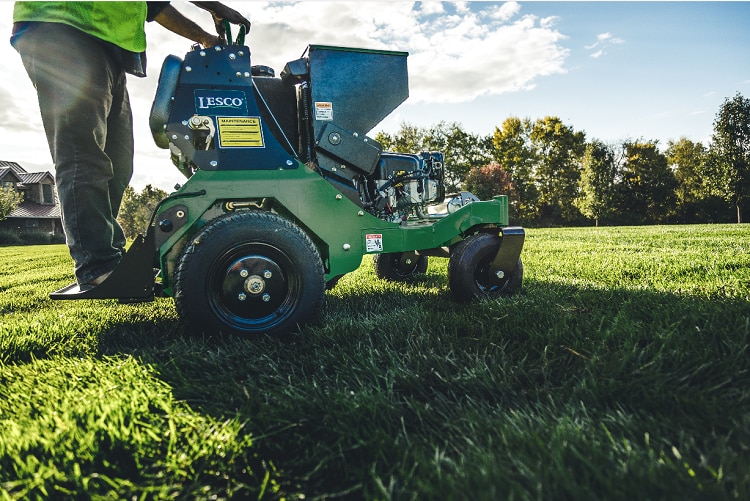Spring Seeding Guide

It’s the time of year when landscape projects and improvements are at an all-time high. The length of a true spring season can vary based on winter’s end and the start of summer heat. Whether seeding spots or a new establishment, these tips can help guide you to success.
Product selection
When fast establishment is desired, perennial ryegrass is an excellent choice. In areas facing heat and drought, tall fescue will outperform other cool-season species. Known for its dark green color and deep root system, tall fescue is broadly adaptable. Mixtures are very popular way to gain benefits from multiple species. Seed mixtures can also be composed to tolerate shady conditions. For those in the south and transition zone climates, spring and summer are the optimal time for planting bermudagrass.
Preparation
Planning ahead is the most critical process in spring seeding. As weather temperatures warm up and frost is no longer a threat, you will want to monitor soil temperatures. Soil temperatures will dictate germination timing. Ideal soil temperatures in cool-season turf are 59° to 86° F whereas warm-season turf is 68° to 95° F. Remember to apply good seed to soil contact for optimal germination results.
In preparation for seeding, it is also critical to review your turf maintenance program to determine if seeding is feasible with pre-emergent and/or post-emergent herbicide applications typically performed in the spring. Many herbicides can hinder germination results, so it is vital to review the overall maintenance plan along with reading all control product labels thoroughly. Herbicides containing Mesotrione as the active ingredient are labelled safe to use while seeding only with certain turf species including tall fescue, Kentucky bluegrass, perennial ryegrass, fine fescues, and centipede. This is an option to help control certain broadleaf and grassy weeds without hurting turf establishment.
Being mindful of the harsh conditions ahead is important going into the summer season and potential turf disease pressures. You will want well-established healthy turf rather than a more sensitive, emerging turf to be ready for the conditions lying ahead.
Article provided by SiteOne/LESCO. Products such as LESCO Carbon Pro can increase nutrient uptake and enhance root mass to aide in overall establishment. Other products, such as LESCO Moisture Manager, can reduce watering needs by up to 50% to help your new turf better fight summer drought conditions.


